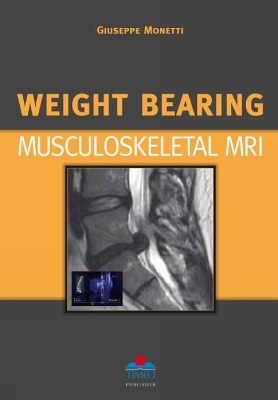
Weight Bearing Musculoskeletal MRI
Seiten
2011
Timeo Editore SRL (Verlag)
978-88-97162-05-6 (ISBN)
Timeo Editore SRL (Verlag)
978-88-97162-05-6 (ISBN)
- Titel nicht im Sortiment
- Artikel merken
The MRI investigation, performed in supine and upright positions, allows many functional evaluations of several anatomical districts. The use of this device in the study of the spine often shows an emphasis on the problems of spine assessment, with particular reference to anterior and posterior spondylolisthesis and the presence of herniated discs.
The MRI investigation performed in supine and upright position, allows many functional evaluations of several anatomical districts. The use of this device in the study of the spine, both the cervical and in particular lumbo-sacral tract, can often show a clear emphasis on the problems of spine assessment, with particular reference to anterior and posterior spondylolisthesis and the presence of herniated discs. In many cases, however, this method is able to reconsider suspected positive diagnosis performed with recumbent MRI. A further use of that method, of course on selected patients, is the study of the spine in inversion at about 60 degrees in order to evaluate the sacrolumbar tract in full discharge relieving pressure on the discs and nerve roots. Very useful is the use of this method in the study of diseases of the lower limb, with particular reference to femoro-acetabular impingement of the hip (pincer-cam type), and especially in capsular ligamentous knee instability (anterior-posterior cruciate ligaments), the meniscal instability and osteochondral injuries. The use of such methods in the ankle and foot joint, will often highlight and accentuate the various types of impingement and functionally demonstrate different capsular-ligament instability. Really helpful is the use of tilting MRI in the assessment of plantar fascia and metatarsal pain syndrome, with special reference to Morton's syndrome. Considerable advantages are offered by this method studying under stress loading the upper limb, providing the patient with a weight ranging from 3 to 5 kg in the study of shoulder, elbow and wrist. At the level of the shoulder joint in particular, the mechanical effects of stress loading can allow brilliant diagnosis especially in the capsular ligament and fibrocartilaginous labrum injury, as may be the slap-lesion. Finally, the dynamic procedures are useful in flexion/extension and radial and ulnar deviation at the elbow and above the wrist, in order to properly diagnose capsular ligament and triangular fibrocartilage complex injury.
The MRI investigation performed in supine and upright position, allows many functional evaluations of several anatomical districts. The use of this device in the study of the spine, both the cervical and in particular lumbo-sacral tract, can often show a clear emphasis on the problems of spine assessment, with particular reference to anterior and posterior spondylolisthesis and the presence of herniated discs. In many cases, however, this method is able to reconsider suspected positive diagnosis performed with recumbent MRI. A further use of that method, of course on selected patients, is the study of the spine in inversion at about 60 degrees in order to evaluate the sacrolumbar tract in full discharge relieving pressure on the discs and nerve roots. Very useful is the use of this method in the study of diseases of the lower limb, with particular reference to femoro-acetabular impingement of the hip (pincer-cam type), and especially in capsular ligamentous knee instability (anterior-posterior cruciate ligaments), the meniscal instability and osteochondral injuries. The use of such methods in the ankle and foot joint, will often highlight and accentuate the various types of impingement and functionally demonstrate different capsular-ligament instability. Really helpful is the use of tilting MRI in the assessment of plantar fascia and metatarsal pain syndrome, with special reference to Morton's syndrome. Considerable advantages are offered by this method studying under stress loading the upper limb, providing the patient with a weight ranging from 3 to 5 kg in the study of shoulder, elbow and wrist. At the level of the shoulder joint in particular, the mechanical effects of stress loading can allow brilliant diagnosis especially in the capsular ligament and fibrocartilaginous labrum injury, as may be the slap-lesion. Finally, the dynamic procedures are useful in flexion/extension and radial and ulnar deviation at the elbow and above the wrist, in order to properly diagnose capsular ligament and triangular fibrocartilage complex injury.
Introduction; A Few Words About Capoeira; Roda & Jogo; Warm Up & stretching; Ginga; Esquivas; Negativas; Pontapes; Au; Golpes; Floreios; Meia lua de compasso; Cabecada; Rasteira; Queda de rims; Fintas; Macaco; Floreios; Desequilibrantes; Golpes Traumatizantes; Golpes com Floreios; Jogo de Angola; Sequencias; Saltos; Glossary.
| Erscheint lt. Verlag | 1.12.2011 |
|---|---|
| Zusatzinfo | Illustrations |
| Sprache | englisch |
| Maße | 300 x 210 mm |
| Gewicht | 1595 g |
| Themenwelt | Medizin / Pharmazie ► Medizinische Fachgebiete ► Orthopädie |
| ISBN-10 | 88-97162-05-3 / 8897162053 |
| ISBN-13 | 978-88-97162-05-6 / 9788897162056 |
| Zustand | Neuware |
| Haben Sie eine Frage zum Produkt? |
Mehr entdecken
aus dem Bereich
aus dem Bereich
Buch | Softcover (2022)
Urban & Fischer in Elsevier (Verlag)
CHF 54,60
Atmungs-Orthopädie System Schroth
Buch | Hardcover (2021)
Urban & Fischer in Elsevier (Verlag)
CHF 96,50
Buch | Softcover (2022)
Trias (Verlag)
CHF 30,90


